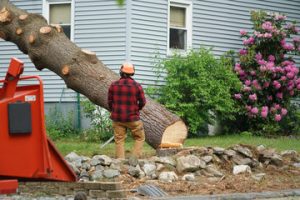The digital world changes every second. What worked yesterday might not work today. Search engines no longer rely on simple keywords. They crave intent, context, and authenticity.

Modern SEO has become a living organism. It adapts, grows, and reacts to user behavior. Algorithms learn from patterns, not just phrases. This evolution transforms visibility into a science of connection. Visit helenaseopros.com to learn more.
The essence of SEO now lies in understanding emotion. Every query is a question seeking human resonance. People no longer search for words; they search for feelings. This emotional search behavior is redefining optimization strategies.
Machine learning sits at the heart of this shift. Systems interpret tone, rhythm, and subtlety. A page rich in empathy performs better than one filled with robotic repetition. This marks a turning point in digital storytelling.
The concept of “search intent clustering” has emerged. Instead of chasing single terms, creators now focus on intent families. These clusters form a network of meanings that boost contextual authority. It’s less about ranking high, more about being relevant everywhere.
Voice queries add another layer to this landscape. Spoken searches introduce tone, rhythm, and conversational nuance. Optimization for voice means writing like humans speak. Short, clear, and emotionally aware phrasing dominates the future.
Visual search is also taking the stage. Images, videos, and even screenshots can now generate discoverable data. Algorithms recognize shapes, colors, and scenes to connect visual input with textual relevance. SEO, therefore, now involves storytelling through sight.
Semantic optimization has replaced keyword stuffing. Search engines decode relationships between ideas. They reward coherence, context, and continuity. Every sentence must contribute to the overall narrative structure.
There’s an emerging idea called “predictive SEO.” It anticipates what users will want before they know it. Data forecasting models analyze current engagement patterns to predict future trends. It’s proactive visibility rather than reactive response.
User experience and search performance now share the same heartbeat. The line between content and design has blurred. How information feels is as vital as what it says. SEO professionals now act as digital psychologists.
Behavioral SEO is another growing field. It studies micro-actions such as cursor movement and dwell time. These subtle indicators reveal emotional engagement levels. Search systems are starting to read behavior as a ranking signal.
The new SEO landscape favors minimalism. Less clutter means faster comprehension. Clean designs improve cognitive flow and reduce decision fatigue. This harmony between simplicity and strategy fuels stronger retention.
Accessibility has become an invisible ranking weapon. When content is inclusive, it reaches more hearts and eyes. Search engines measure usability for all, not just for some. Accessibility equals authenticity in digital ecosystems.
Emotionally resonant headlines are becoming critical. They work as psychological triggers for both users and algorithms. Sentiment analysis tools now read emotional polarity. A hopeful tone may rank better than a neutral one.
Ethical SEO is another new frontier. Transparency and responsibility are now measurable. Misleading tactics can damage long-term trust signals. Integrity has turned into a form of optimization currency.
AI-generated summaries are changing click behavior. Featured snippets and direct answers reduce browsing friction. SEO experts must craft content that teaches quickly yet encourages deeper exploration. This balance defines modern visibility.
Interactivity in SEO is quietly revolutionizing engagement. Dynamic elements like quizzes and instant feedback loops create micro-conversions. These signals inform algorithms about satisfaction levels. Engagement becomes a ranking force of its own.
The rise of “attention optimization” is undeniable. With shorter attention spans, every word must work harder. SEO writing now mimics cinematic pacing. It builds anticipation, delivers impact, and fades gracefully.
Data storytelling merges analytics with art. Numbers no longer live in spreadsheets alone. They become narratives that influence search performance. Understanding user journeys through emotion-driven metrics is the new metric of mastery.
Temporal SEO focuses on the rhythm of publication. Timing determines resonance. Algorithms reward consistency aligned with user activity peaks. Releasing content at emotional high points increases retention and sharing.
Ephemeral SEO is a new conversation. Temporary content like stories and fleeting visuals now generate bursts of relevance. Short-lived exposure can drive long-term loyalty if timed correctly. It’s search built on moments rather than permanence.
Environmental SEO introduces sustainability to optimization. Lightweight pages and low-energy hosting now contribute to algorithmic preference. Digital sustainability merges environmental awareness with technical precision.
Neuro-SEO is entering experimental phases. It involves understanding subconscious triggers that affect decision-making. By aligning structure with brain patterns, content feels naturally digestible. This discipline may redefine digital empathy.
The shift from keywords to key experiences is accelerating. Users crave depth, not data. SEO strategy now integrates sensory engagement, visual memory, and emotional recognition. Connection outperforms competition.
Personalization is entering hyper mode. Algorithms no longer just localize results—they individualize them. Two people searching for the same term may see entirely different outcomes. Relevance becomes a fingerprint rather than a formula.
Hyperlocal intent extends beyond geography. It includes emotional and situational context. Search now recognizes when users seek comfort, challenge, or curiosity. Relevance depends on reading emotional geography.
Reputation signals are growing stronger. Trustworthiness, authenticity, and narrative consistency determine ranking resilience. Users reward honesty through engagement longevity. Algorithms follow suit.
Technical SEO remains the spine of all these shifts. Speed, structure, and schema still matter deeply. Yet, these mechanics now exist to serve emotional precision. Technology without empathy is invisible.
Augmented reality introduces immersive discoverability. SEO expands beyond screens into lived experience. AR content can become indexed and ranked through engagement layers. Interaction turns into information.
Multisensory optimization might soon follow. Sound, texture, and ambient cues may inform ranking in extended reality spaces. The search will not just be read but felt. Experience optimization will replace static optimization.
Cognitive load balancing is gaining traction. Search prefers content that guides users gently through complexity. The smoother the comprehension curve, the higher the satisfaction signals. Calm interfaces now outperform loud ones.
The art of SEO copywriting is evolving into linguistic engineering. Writers balance clarity and cadence with algorithmic awareness. It’s a symphony of logic and lyricism where rhythm influences rank.
Data ethics now define sustainability in SEO. Respecting privacy, consent, and transparency generates long-term digital equity. Search engines monitor moral integrity as part of quality assessment. Ethical clarity drives trust velocity.
Microcontent dominance is reshaping hierarchy. Small, shareable snippets outperform long monologues in certain spaces. Brevity combined with precision triggers faster visibility loops. Short-form storytelling now coexists with in-depth exploration.
Predictive linking is also a new innovation. It anticipates what users want to click next. These intelligent internal connections improve journey satisfaction. SEO becomes a guided narrative rather than a static library.
The role of emotion-driven metrics continues to grow. Algorithms are learning to detect comfort, curiosity, and satisfaction through text tone. Positive sentiment engagement boosts visibility cycles. Emotion has become data.
In the coming years, SEO may merge with cognitive design. Pages will adjust dynamically to user state. If a reader appears confused, tone and visuals will adapt. Personal experience will define ranking.
Privacy-centric optimization is another rising concept. With tighter data regulations, SEO strategies now rely on consent-based personalization. Transparency about data use improves trust signals. Open ethics build algorithmic favor.
Quantum computing could revolutionize how search engines interpret data. Instant decoding of complex patterns could make SEO multidimensional. Strategies will shift from prediction to synchronization. Optimization will exist in real time.
The next phase of SEO might involve emotional fingerprints. Each piece of content could carry an identifiable emotional signature. Search systems will match emotional tone with user intent, amplifying relatability.
SEO professionals are becoming narrative engineers. They design ecosystems of meaning where users feel understood. The future belongs to creators who merge data fluency with human warmth. Optimization will become indistinguishable from empathy.
In the silent pulse of this evolution lies one truth. Search is no longer about discovery—it’s about belonging. When users feel seen, heard, and valued, algorithms follow. The future of SEO beats with a human heart.




